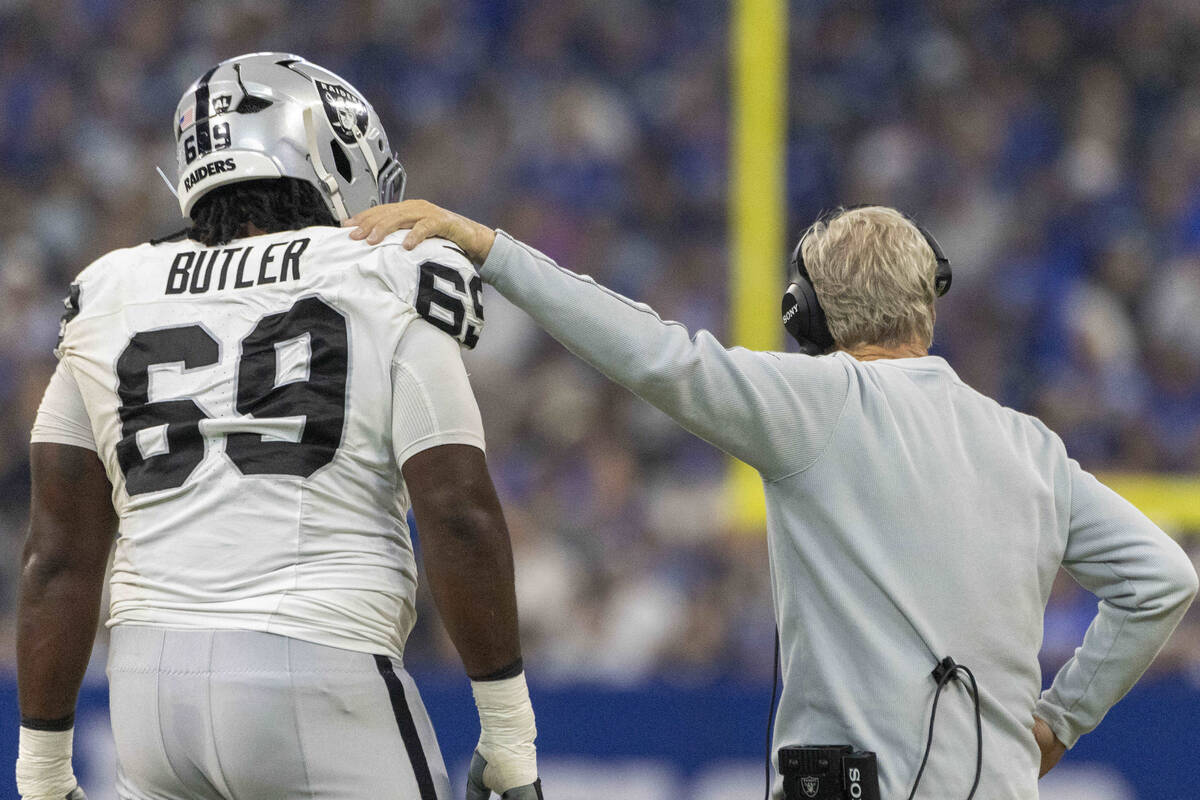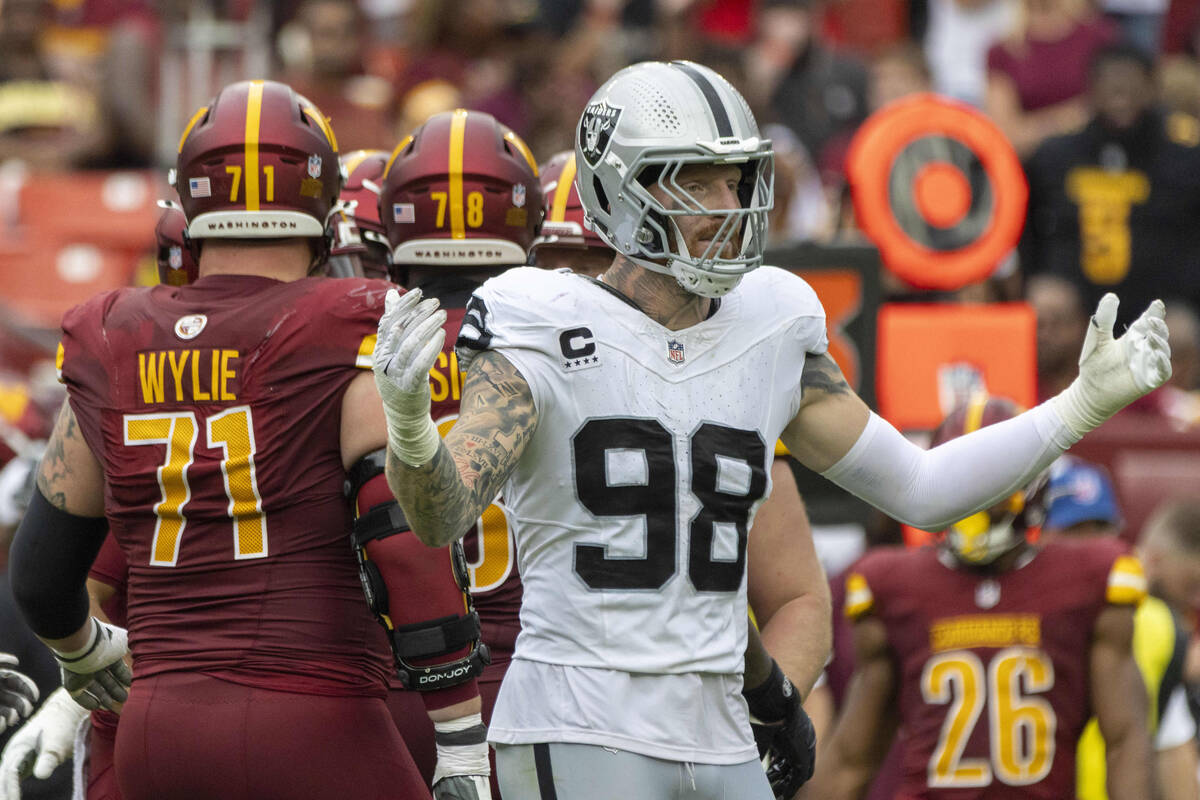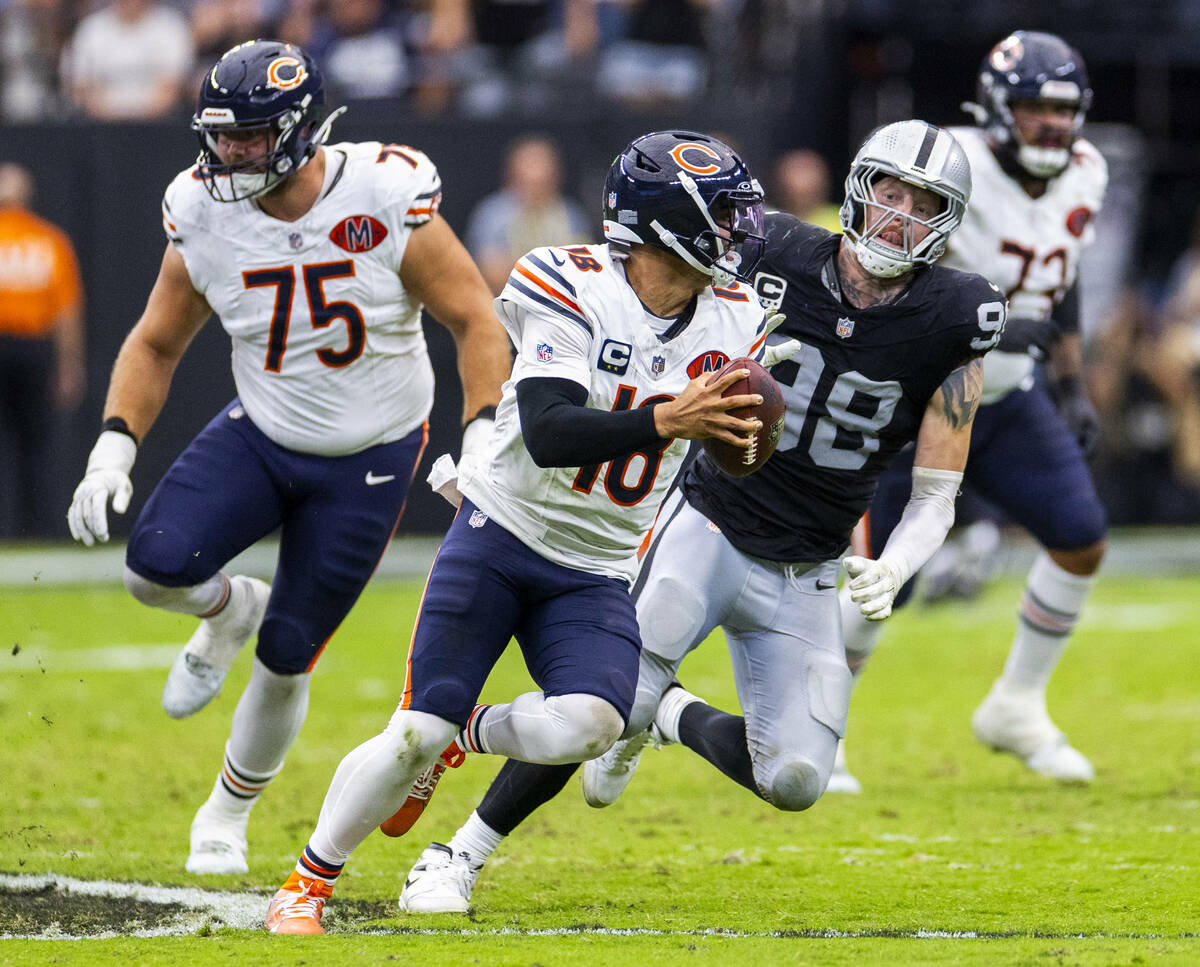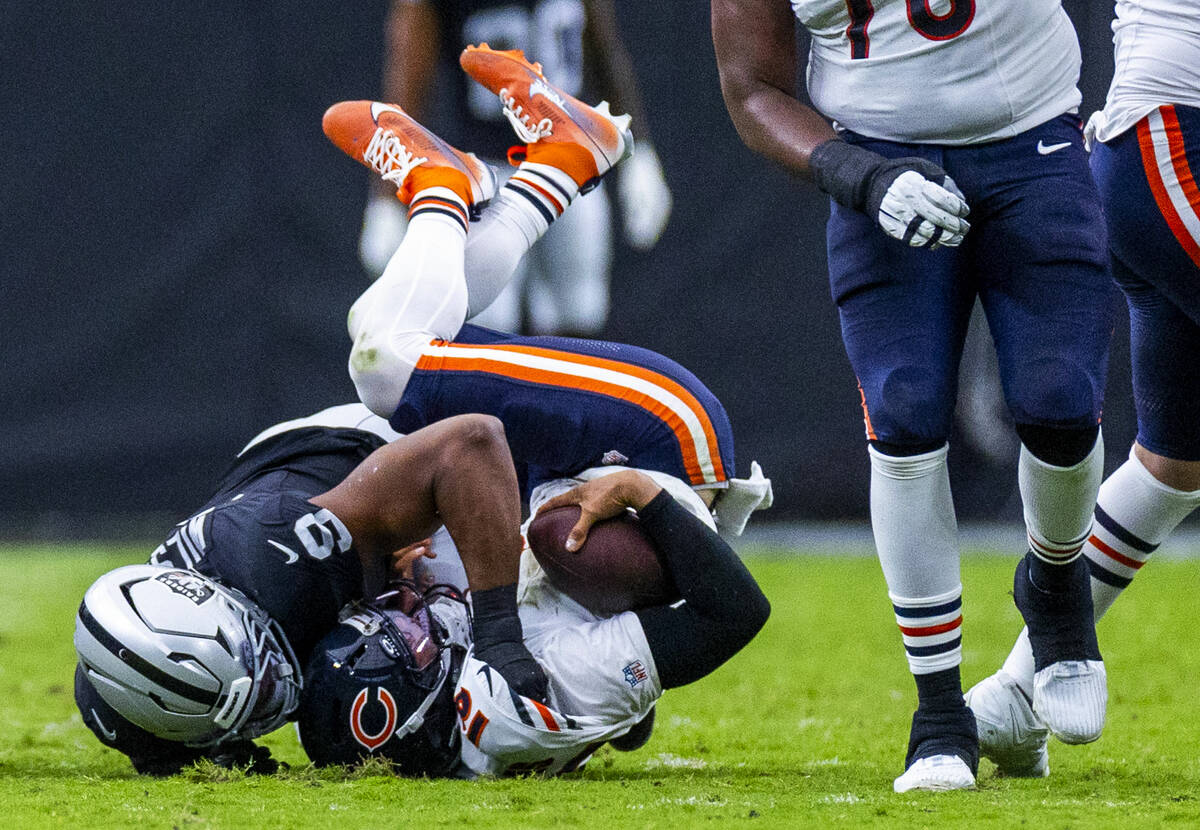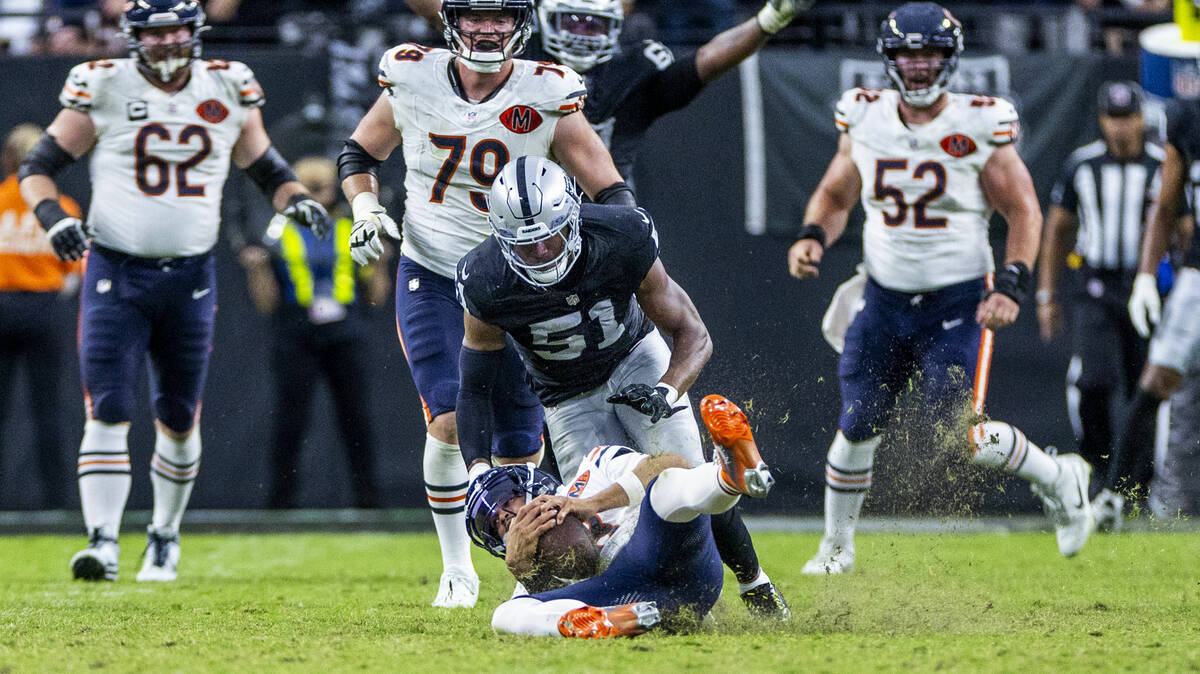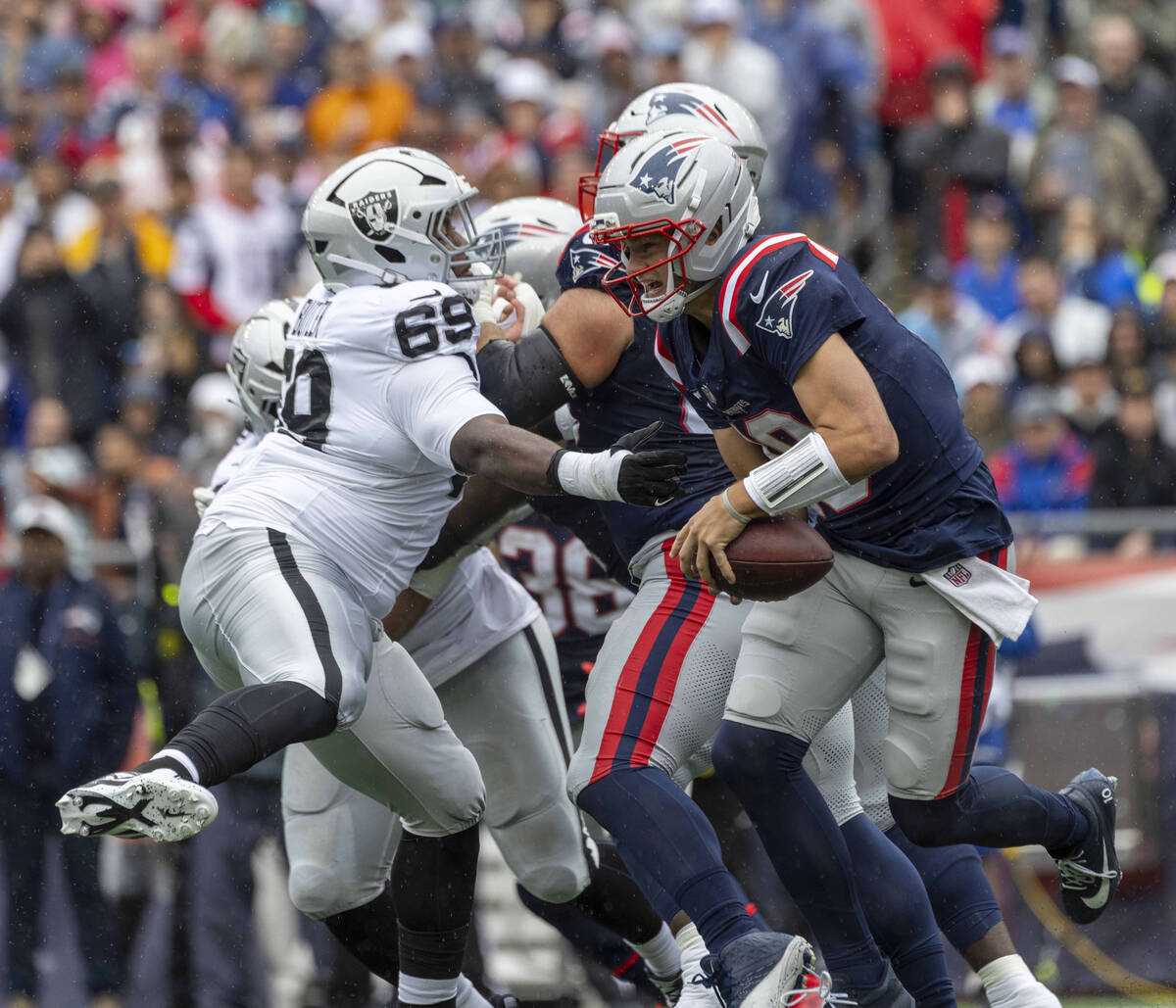What’s wrong with Raiders pass rush, and how can it be fixed?
One of the Raiders’ major issues in their 40-6 loss to the Colts last week was an impotent pass rush that failed to sack quarterback Daniel Jones.
That could pose a major problem for the team moving forward.
Jones and the Colts exposed an obvious weakness in the Raiders’ defense — one that has been festering all season — with short to intermediate throws. That exploited the team’s deficiencies in coverage, as well as negated a pass rush that has failed to make a consistent impact all year.
Unless coach Pete Carroll and defensive coordinator Patrick Graham make some adjustments, the Raiders’ future opponents are bound to copy Indianapolis’ game plan.
Carroll seems open to making changes ahead of the team’s home game against the Titans on Sunday at Allegiant Stadium.
“We have to mix our calls,” Carroll said. “We’ll take, first, responsibility to mix our calls so that we can try to get them out of rhythm.”
The Raiders hope applying more pressure to Tennessee quarterback Cam Ward, the No. 1 overall pick in April’s draft, helps them stop their four-game losing streak.
But it’s easier said than done. Here’s a deeper dive into the team’s problems rushing the passer:
Numbers don’t lie
The Raiders haven’t impacted games up front the way they want to. They have eight sacks, the 25th-most in the NFL.
Their issues go beyond that, however.
The Raiders’ 18.2 percent pressure rate ranks 20th.
They’re struggling as a unit, plus some of their best individual pass rushers aren’t getting the job done.
Defensive end Maxx Crosby has 19 pressures and two sacks on 145 pass rushing snaps. Defensive end Malcolm Koonce, who re-signed with the team this offseason after missing all of last year with a knee injury, has 11 pressures and one sack in 104 snaps. Defensive end Tyree Wilson, the No. 7 overall pick in the 2023 draft, has eight pressures and two sacks on 93 snaps.
In Crosby’s defense, he has faced double and triple teams when trying to get after opposing quarterbacks. It’s a sign of respect. But the Raiders’ other defensive linemen haven’t been able to win the one-on-one matchups they’ve been given due to all the attention Crosby receives.
“It comes down to those guys working together and winning their individual battles when it comes up,” Graham said.
Second-year defensive tackle Jonah Laulu, a Centennial alum, leads the Raiders with three sacks. But he, defensive tackle Adam Butler and defensive tackle Thomas Booker IV haven’t been able to create pressure consistently.
Butler leads the Raiders’ interior defensive linemen with seven pressures, but his production is nowhere near that of some of the best defensive tackles in the NFL like Tennessee’s Jeffery Simmons (23 pressures).
The play-calling hasn’t found enough answers to make the players’ jobs easier. The Raiders are blitzing 22.91 percent of the time, below the league average of 31.64 percent.
“I got to do a better job of creating opportunities for the guys in terms of just tying together the coverage and the rush,” Graham said.
Not just the pass rushers
Blame for the Raiders’ pass-rushing woes goes beyond the defensive line.
The team has been hesitant to have its linebackers play man coverage. That’s allowed opponents to exploit the group in zone coverage with short, quick passes to running backs and slot receivers.
Linebackers Devin White and Jamal Adams have allowed opponents to complete more than 70 percent of their passes when they’re the primary defender in coverage.
Linebacker Germaine Pratt also struggled before being cut by the Raiders on Monday.
Safety Jeremy Chinn, who often drops down into the box, is another pass coverage liability. Opponents are completing 75 percent of their passes when targeting him.
Jones and the Colts took advantage of the Raiders’ issues to string together short, quick passes for long scoring drives. Jones released the ball in 2.41 seconds on average, which gave the pass rush almost no time to get home. Only three quarterbacks who have started a game this season have an average time to throw under 2.41 seconds.
“It gets pretty frustrating knowing that the ball is coming out,” Butler said. “It’s like you can get into your rush or you can be in the right spot, and there it goes.”
Not playing with the lead
Another easy way to slow down a pass rush is to play with a lead. The Raiders have learned that the hard way.
The team held a lead just 26.5 percent of the time in its first five games. The Raiders’ largest lead has been 10 points in their season-opening win over the Patriots. They haven’t won since.
The Raiders’ opponents, because they’ve been ahead so often, have been able to lean into the running game or conservative pass concepts.
They haven’t had to take many chances down the field or run long-developing plays that could give defensive linemen more time to create pressure.
“We just got to put points on the board,” Butler said.
Getting a lead could allow the Raiders to stop worrying about the run game. They could just pin their ears back and get after the quarterback.
“If we can make teams one-dimensional, take the run away or take the quick pass away, I think the odds will be in our favor,” Butler said. “But until we do that, it’ll be a problem.”
Contact Vincent Bonsignore at vbonsignore@reviewjournal.com. Follow @VinnyBonsignore on X.



